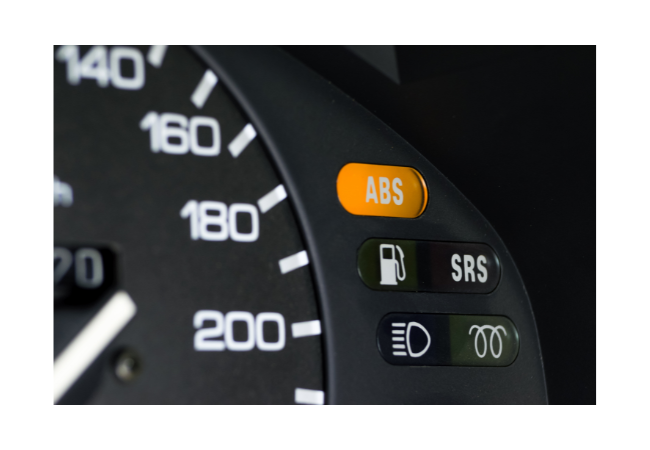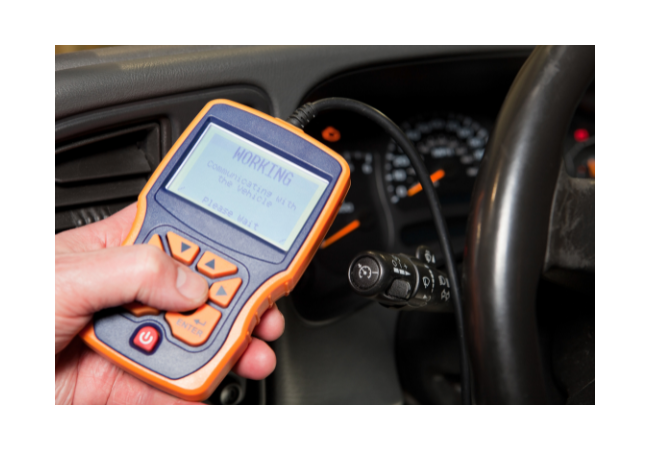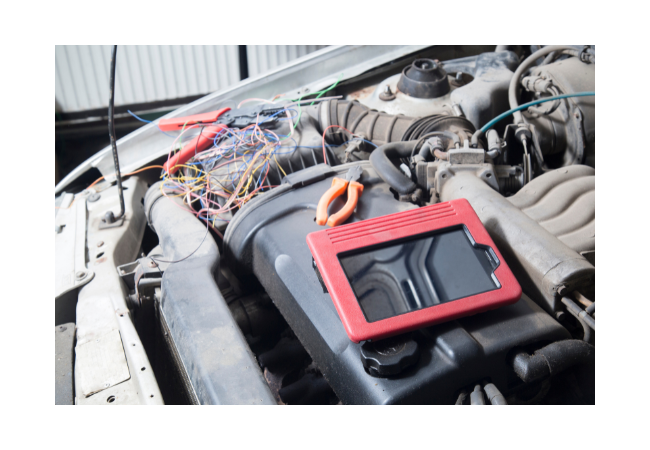Have you ever noticed the ABS light on your Cadillac CTS and wondered how to reset it? Don’t worry, you’re not alone. Many vehicle owners face this issue, but with the right knowledge and tools, you can quickly and easily learn how to reset ABS light on Cadillac CTS. In this comprehensive guide, we’ll walk you through understanding the ABS light, identifying the cause of activation, fixing common issues, and resetting the light. So buckle up and let’s dive into the world of ABS light troubleshooting!
Contents
- 1 Key Takeaways
- 2 Understanding the ABS Light
- 3 Identifying the Cause of ABS Light Activation
- 4 Fixing Common ABS Light Issues
- 5 Resetting the ABS Light
- 6 Preventing Future ABS Light Activation
- 7 Is it Safe to Drive with the ABS Light On?
- 8 Summary – How to Reset ABS Light on Cadillac CTS
- 9 Frequently Asked Questions
Key Takeaways
- Understand the ABS light and its components to maintain functionality.
- Identify the source of activation with the OBD2 scanner or visual inspection, then address the root cause such as faulty sensors or low brake fluid levels.
- Reset the ABS light by disconnecting the battery. Prevent future activations through regular inspections and tire pressure monitoring.
Understanding the ABS Light

The ABS light is a vital safety feature in your Cadillac CTS, serving as part of the anti-lock brake system. This system prevents your wheels from locking up during braking, allowing for better vehicle control and safety.
When the ABS light remains illuminated, it disables your vehicle’s anti-lock brakes, traction control, and stability control. As a result, a notification requesting service for the Anti-lock Braking System, Traction Control, and Stabilitrak will be displayed.
To avoid future ABS light activation, you should conduct regular inspections, monitor tire pressure, and pay attention to the traction control light, also known as the TCS light.
Anti-lock Braking System
The Anti-lock Braking System (ABS) is a safety feature designed to prevent wheel lockup during braking, ensuring a safer driving experience. The ABS system pumps the brakes to prevent your vehicle from skidding uncontrollably, enhancing the performance of your Cadillac CTS.
In effect, the ABS system acts as your road safety guardian, especially in harsh conditions, guaranteeing constant control over your vehicle.
ABS Warning Light Indicators
Various factors can trigger the ABS light in your Cadillac CTS. Some common indicators include:
- Malfunctioning wheel speed sensors
- Low brake fluid
- A blown fuse or faulty relay
- Reduced tire pressure
- A defective ABS module
The most frequently observed issue causing the ABS light to remain illuminated is a defective ABS wheel speed sensor. If the ABS light and brake light illuminate simultaneously, it is crucial to stop driving immediately to avoid brake failure.
Low brake fluid in your Cadillac CTS can result from worn brake pads, worn rotors, or a leak in the system.
Identifying the Cause of ABS Light Activation

Establishing why the ABS light is activated can be achieved by either using an OBD2 scanner to read fault codes from the ABS module or by visually inspecting the ABS system components. Professionals such as a Cadillac dealer, a local auto mechanic, or even the vehicle owner can read fault codes from the ABS module of a Cadillac CTS.
The ABS light may be triggered by various issues like faulty ABS sensors, damaged ABS rings, low brake fluid levels, a malfunctioning ABS module, and blown fuses.
Using an OBD2 Scanner
An OBD2 scan tool is a diagnostic tool that connects to your Cadillac CTS’s OBD2 port to read and communicate information regarding the engine and other vehicle systems. To troubleshoot the ABS light, you will need to enter the vehicle’s make, model, engine type, and VIN into the diagnostic tool.
Once you connect the scanner to your Cadillac CTS and read out the error codes, you can identify which ABS sensor is malfunctioning based on the error codes.
Visual Inspection
Visual inspection of ABS system components, such as wheel speed sensors, wiring, and connectors, helps detect potential issues that could trigger the ABS light to activate. A visual inspection is a quality control method that involves examining an asset or object with the unaided eye, without special equipment. In the context of engagement and site statistics, this method can be applied to ensure the proper functioning of ABS systems and prevent spam fraud and abuse.
To perform a visual inspection, you should check the following for signs of damage or wear:
- Wheel speed sensors
- Wiring
- Connectors
- ABS system components
This assessment can reveal potential issues like damaged wheel speed sensors, wiring and connectors, and ABS system components.
Fixing Common ABS Light Issues
Once the cause of the ABS light activation is pinpointed, it’s time to address the problem. Common ABS light problems include:
- Contamination of sensors or damage to sensor wiring
- Failure of the ABS module
- Low battery voltage
- Disruption of the wheel speed sensor wire
- A dirty tone ring
- A faulty wheel bearing
A blown fuse or bad relay issue can be rectified by replacing with a new fuse of the specified amp rating. However, it’s important to tackle the root cause before resetting the ABS light.
Replacing Wheel Speed Sensors
If you’ve identified a faulty wheel speed sensor as the cause of your ABS light issue, you must replace it. To do this, first, disconnect the wiring harness and unscrew the faulty sensor from the wheel hub.
Next, follow these steps to install the new wheel speed sensor.
- Remove the old sensor by disconnecting the wiring harness and unscrewing it.
- Install the new wheel speed sensor and connect the wiring harness.
- Secure the sensor in place with a screw.
- Use an OBD2 scanner to test the new wheel speed sensor.
Replacing a faulty sensor should resolve the ABS light activation.
Addressing Brake Fluid Problems
If your ABS light activation is due to low brake fluid, it’s crucial to tackle this problem to avert more complications. The recommended brake fluid level should be between the “MIN” and “MAX” marks on the brake fluid reservoir. It’s advisable to check the brake fluid level at least once a month.
The brake fluid level might be low due to worn brake pads, worn rotors or even a leak in the system. Regular checking of such components and ensuring they are in perfect condition is necessary. To refill the brake fluid, purchase the correct type of brake fluid for your vehicle and use a funnel to pour it into the brake fluid reservoir.
It’s also essential to inspect for any other potential issues with the brake system, such as worn brake pads, damaged brake lines, or a malfunctioning brake pedal.
Repairing Damaged Wiring and Connectors
Damaged wiring and connectors related to the ABS system can also trigger the ABS light. To repair or replace them, first, identify the damaged wiring and connectors.
Next, disconnect the wiring and connectors, and then repair or replace them as needed. Finally, reconnect the wiring and connectors to the ABS system.
Repairing or replacing damaged wiring, connectors, and positive cable should resolve the ABS light issue.
Resetting the ABS Light
Once the root cause leading to the ABS light activation is resolved, the next step is to reset the ABS light. There are two methods to reset the ABS light: using an OBD2 scanner or disconnecting the battery.
Keep in mind that it’s essential to resolve the issue before attempting to reset the light, as the light may remain illuminated if the problem persists.
Using an OBD2 Scanner
An OBD2 scanner can be used to clear fault codes and reset the ABS light. To do this, follow these steps:
- Connect the OBD2 scanner to your Cadillac CTS.
- Read out the error codes stored in the car’s computer using the scanner.
- Clear the fault codes using the scanner.
The ABS light should reset if there is no further issue with the system.
Disconnecting the Battery
Another method to reset the ABS light is to disconnect the battery and drain the residual electricity. To do this, follow these steps:
- Locate the battery in the engine compartment.
- Use a wrench to loosen the nut on the negative terminal.
- Carefully lift the negative terminal from the battery.
- Allow a minimum of 10 minutes for the residual electricity to dissipate.
Afterward, reconnect the negative terminal and use a wrench to secure it with the nut. The ABS light should reset if there is no further issue with the system.
Preventing Future ABS Light Activation

Preventing future ABS light activation requires diligent maintenance of your Cadillac CTS, including regular inspections, tire pressure monitoring, and awareness of wet or snowy conditions. Proper maintenance can help you avoid ABS light-related issues and ensure a safer driving experience for you and your passengers.
Regular Inspections
Regular inspections are essential for maintaining your Cadillac CTS’s ABS system components. Consistent vehicle check-ups can help identify any issues or potential problems with:
- the wheel speed sensors
- brake fluid
- wiring and connectors
- tire pressure
By conducting regular inspections and addressing any problems promptly, you can ensure that your ABS system functions properly and meets the necessary standards.
Tire Pressure Monitoring
Proper tire pressure monitoring is crucial for preventing ABS light activation due to low tire pressure. To monitor tire pressure effectively, check it regularly and adjust it accordingly.
Additionally, it’s advised to check tire pressure when the tires are cold, as pressure can vary when the tires are hot. Maintaining the correct tire pressure can help prevent ABS light activation and ensure a safe driving experience.
Is it Safe to Drive with the ABS Light On?
When the ABS light is on, the ABS system is turned off, causing your braking system to work like an older conventional system. Driving with an active ABS light presents potential risks and safety concerns, such as increased risk in wet or snowy conditions and potential brake failure if the ABS light is accompanied by a BRAKE warning light.
If the ABS light is illuminated, it’s essential to drive with caution and attend to the issue promptly.
Wet or Snowy Conditions
Driving with an active ABS light in wet or snowy conditions can increase the likelihood of skidding or sliding. The ABS system is designed to prevent wheel lockup during braking and provide improved control in slippery conditions. Therefore, it’s essential to have the ABS system inspected and serviced to ensure safe driving in wet or snowy conditions.
To drive safely in these conditions, reduce your speed, increase your following distance, and turn on your headlights, depending on your settings.
Brake Failure
If the ABS light is accompanied by a BRAKE warning light, it indicates a malfunction in the main braking system, and it’s imperative to stop driving immediately due to the potential for brake failure. Brake failure can result in a loss of vehicle control and potentially lead to an accident.
In order to prevent brake failure, it’s necessary to regularly inspect the brakes and keep an eye on tire pressure.
Summary – How to Reset ABS Light on Cadillac CTS
Now that you’ve learned how to reset the ABS light on your Cadillac CTS, you can confidently tackle any ABS light-related issues. Remember to conduct regular inspections, monitor tire pressure, and address any potential problems promptly. By doing so, you’ll ensure a safer driving experience and keep your Cadillac CTS in top-notch condition. Drive safe, and happy motoring.
Frequently Asked Questions
How do you manually reset ABS light?
To manually reset the ABS light, disconnect the positive cable from the car battery and hold down the brake pedal to drain the electrical system.
Then, press the gas pedal three times to turn on the lights, and finally, plug in the cable to restore power.
How do I fix my ABS and traction control light?
Press the gas pedal 3 times quickly, then turn your engine on and let it run for a minute.
This should reset the TCS and ABS lights, indicating there is no underlying problem with the traction control system.
